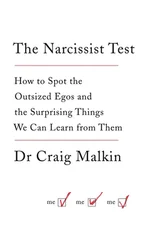There was a large flat-screen TV on the wall. On the screen, there were pictures of dead people in rotation, displayed with information on their funerals and snippets of quotations from their families. Irene sat in horror that her mother might come up in the rotation, smiling patiently, next to a blank space, or worse, a note that read, “Bernice Sparks, survived by her daughter, who declined a funeral, declined an urn, declined to give us anything with which to fill this space. Will she be missed?”
A half door swung open and a young woman called out, “For Bernice Sparks?” Irene came to the half door, and beyond it she could see a very pedestrian sort of office, with filing cabinets and rolling office chairs, just the sort of place where accounting is done or billing is accomplished. She received some forms on a clipboard and retrieved a check for several thousand dollars from her purse. The transaction was made over the half door, Irene never stepping inside onto the vinyl tile, and the billing person never stepping outside onto the appropriately colored carpet.
“Thank you,” said the woman in a hushed voice. “You’re all set.”
“All set for what?” said Irene. Beside her on the flat screen, the parade of dead people continued in silence. They were all so old. Most had tubes coming out of their faces, or wisps of white hair falling into their eyes.
“You’re all set.”
“Are they going to—” Irene felt tears coming into her eyes. She pushed her mouth shut.
“They will cremate your mother and go ahead with the death certificate, as you specified.”
“When?”
“We do our cremations at night, ma’am,” said the young woman. “So, probably tonight.”
Irene hesitated.
“Did you need to view the charging?”
“No,” she said quickly. She wiped at her eyes. “No, I just wanted to know when.”
Irene knew from the Metropolitan Funeral Home Web site that the inside of a crematorium is called a retort. What a strange word for it. She lingered by the half door.
“Did you want to look at an urn?”
Irene turned and walked back to the lobby, pushed the door open, and walked out to her car. She went to work at the institute. The weather was beautiful, the roads clear of traffic, and she felt, looking around, as if the world was showing her what a good thing it was to be alive. All the fall-blue sky, all the sparkling windows and the dark taut wires criss-crossing the air between her and space. In the coldest branch of the letter H, her mother lay dead in a refrigerator, and soon she would be all burned up in a fire. Burned the rest of the way. Her first burning had happened many years ago. It had not killed Bernice. But you might argue that it had killed her daughter.
Fire is an astronomical necessity. On stars, everything burns.
When Irene was six years old, her mother burned their house down. It was not an accident, but it was not suicide. The difference between an accident and a suicide is that someone dies. So the fire was not a suicide because Bernice did not die. Had she died, it would have been full-on suicide, because the fire was absolutely set by her. Much time was spent among neighbors, discussing whether the fire was set by her on purpose. It was actually caused by drunken mishandling of a smudging stick, and a profusion of oil-soaked silk scarves.
Was it a suicide? What death is not a suicide? What choices does a human really make, and where does the fault lie? When you have determined what constitutes “on purpose,” then you will know.
The police had questioned everyone, and no one knew what happened. Bernice did not know. She was screaming when she woke up, screaming louder than anyone had ever screamed. At the time the fire started, she was unconscious. She had been drinking. She had been smudging. That’s all they knew. Whether she purposefully laid down a smoldering smudge stick on a pile of oil-soaked scarves, or whether she had genuinely fallen asleep with a smudge stick in her hand and cascaded over herself onto the scarves, or whether the scarves and the smudge stick had not been involved at all was unclear. You could say that when you take that first big gulp of liquor, the rest is like falling off a log.
Irene did not remember waking up that night, but the smoke was probably making her choke. She most likely fell out of bed coughing, her eyes bleeding tears. Taught by her schoolteacher to crawl along the floor in the event of a fire, she stayed on her knees and crawled. This is what they learned from the bruises on her knees: she crawled fast. Irene did not remember crawling out. She must have crawled down the stairs, maybe calling “Mommy, mommy!” or maybe just trying to breathe. It doesn’t matter what was poignant or what was real. It only matters that Irene went down the stairs and, finding her mother lying there, on fire, she had begun to kick her and pull her burning hair. What was known for sure was that Irene had kicked and dragged and prodded and forced her mother out onto the porch, where the firefighters were arriving. And they saved Bernice and Irene from that fire.
It’s not possible for a six-year-old to carry a woman out of a burning house, whether or not the woman is on fire. Therefore, Bernice must have saved herself. Even if she didn’t remember. Even if she never meant to. What the firefighters and neighbors saw coming out of the door, along with belching smoke and hot air, was a woman crawling and a child kicking the woman and pulling at her burning hair. The child was shouting angrily, “You don’t die! No, you don’t die! You don’t die!” If you’re dying in a fire, sometimes the best thing for you is a person who will stand there kicking you, telling you not to.
The only remnants of the fire on Bernice were the bubbles of scars on her neck and back. Her dreadlocked hair burned all away, leaving wounds on her head that were awful to see, but some hair grew back. Who knows what really happened, in that burning house? Irene’s memories began the following day. She could not remember the fire or anything that came before. She had learned to get by with something adjacent to forgiveness: forgetting. She tried to forget that her mother had burned them up in a fire. But she could never, ever forgive.
* * *
On the weekend visits during college, Bernice and Sally studied astrology together. Sally was enamored of it—soon they were both doing star charts and reading Manly Hall. Sally learned the art and philosophy of it, Bernice the science. Sally said her dream was to return to Toledo and open a psychic shop with Bernice. They could do a radio show. They could write a book. Summer of sophomore year, they apprenticed themselves to the infamous “Witch of Toledo,” an ancient woman rumored to have descended from Esther Birchard, who lived on a creek offshoot of the river in Maumee and took in clients for psychic readings, curses, cures, and charms. So many people had crashed in cars on the road beside her house that there were hexes and wards hung from the trees, yes hexes and wards even in a highly sophisticated scientific center like Toledo. After all, she called herself a witch. Never mind it was a blind curve with no guardrail.
Sally and Bernice worked for her for free through the summer of ’82, cleaning her house, ordering her appointments, and being allowed to listen in on client visits. Sally learned how to talk about the way the winds move through time, and Bernice learned how to apply statistics to an individual, so that holding a client’s hand and gazing at her palm became a riddle of mathematics, a rigid flowchart of possibilities. Sally got really good at talking and believing, and Bernice got really good at tricking and pretending, until together they could captivate anyone they practiced on. By the summer of ’83, she was allowing them to practice on clients and giving them a cut of the fee. By the summer of ’84, before their senior year, they were practically running the place, and Witch told them she would give them half her business, were they to set up shop on their own.
Читать дальше












